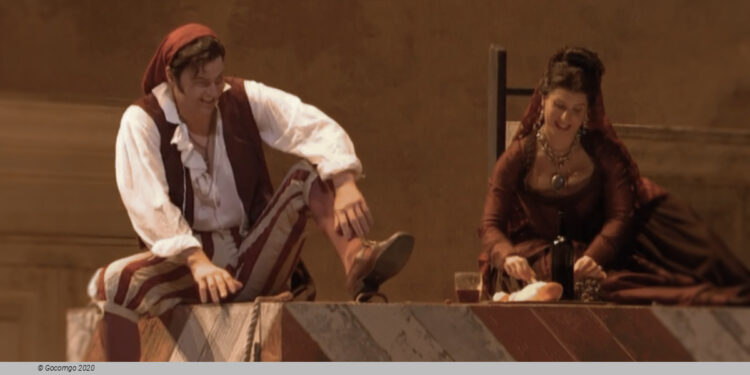“The Barber of Seville,” one of opera’s most beloved comic masterpieces, made its tumultuous debut at Rome’s Teatro Argentina on February 20, 1816. The premiere of Gioachino Rossini’s adaptation of Pierre Beaumarchais’s famous play was, ironically, anything but comic – it was marked by a series of mishaps and was initially considered a failure.
Rossini, just 23 years old at the time, composed the entire opera in a remarkable three weeks. The work tells the story of Count Almaviva, who enlists the help of the quick-witted barber Figaro to win the heart of the beautiful Rosina, who is kept under close watch by her guardian, Dr. Bartolo. The opera’s Italian title, “Il barbiere di Siviglia,” would become synonymous with operatic excellence, though this was far from apparent on opening night.
The premiere was plagued by disasters. A cat wandered onto the stage during the performance, causing chaos among the performers. One of the singers tripped and had to perform an aria while nursing a bloody nose. A broken string on an instrument added to the cacophony. The audience, many of whom were supporters of Giovanni Paisiello (who had previously composed an opera based on the same story), deliberately disrupted the performance with jeers and catcalls.
Despite its disastrous premiere, “The Barber of Seville” quickly recovered and became one of the most performed operas in history. Its sparkling overture, witty plot, and memorable melodies – including Figaro’s famous entrance aria “Largo al factotum” with its renowned “Figaro! Figaro!” refrain – have delighted audiences for over two centuries.
The opera showcases Rossini’s masterful command of bel canto style, combining vocal pyrotechnics with comic timing. His use of the “Rossini crescendo” – a trademark technique where he gradually builds musical tension and volume – perfectly matches the escalating chaos of the plot.
“The Barber of Seville” revolutionized comic opera, demonstrating that musical sophistication and humor could coexist brilliantly. Its influence extends beyond opera, inspiring adaptations in popular culture, including famous cartoons and films. The work remains a cornerstone of the operatic repertoire, performed thousands of times each year in opera houses worldwide, serving as a testament to Rossini’s genius and the enduring appeal of well-crafted musical comedy.
newshub



Recent Comments